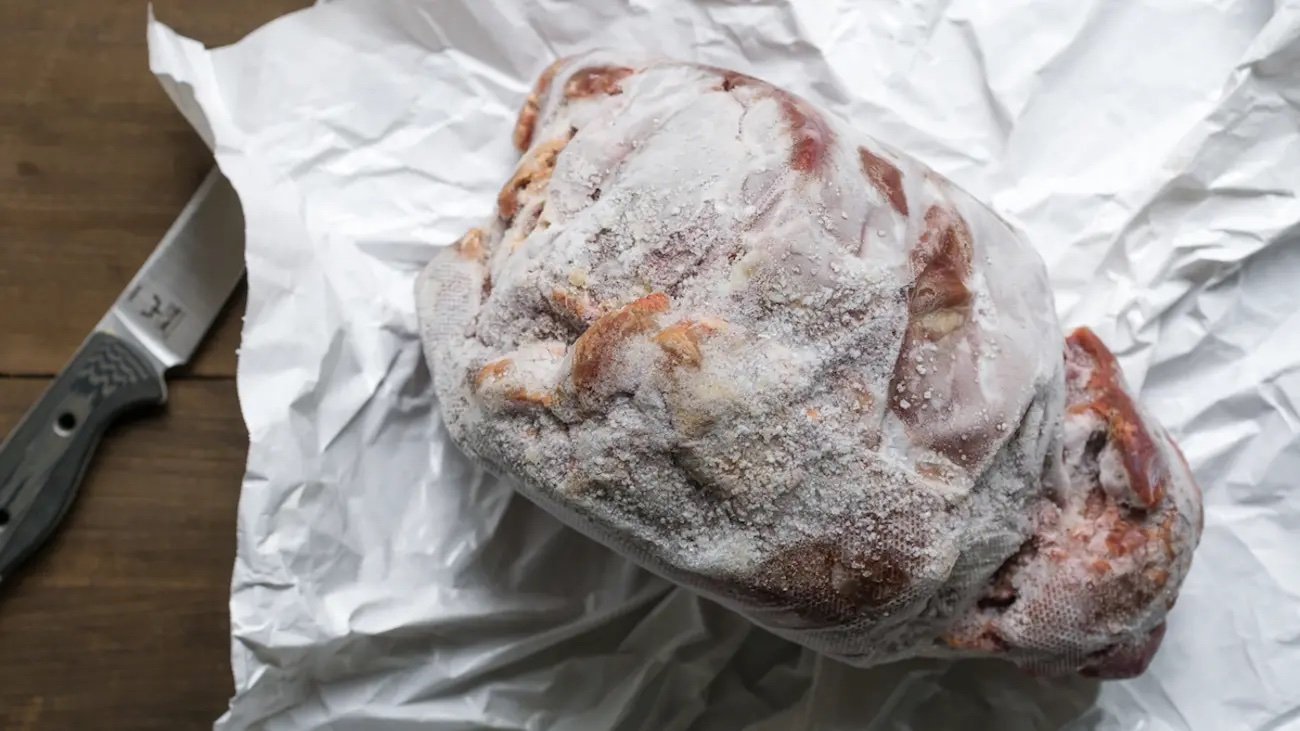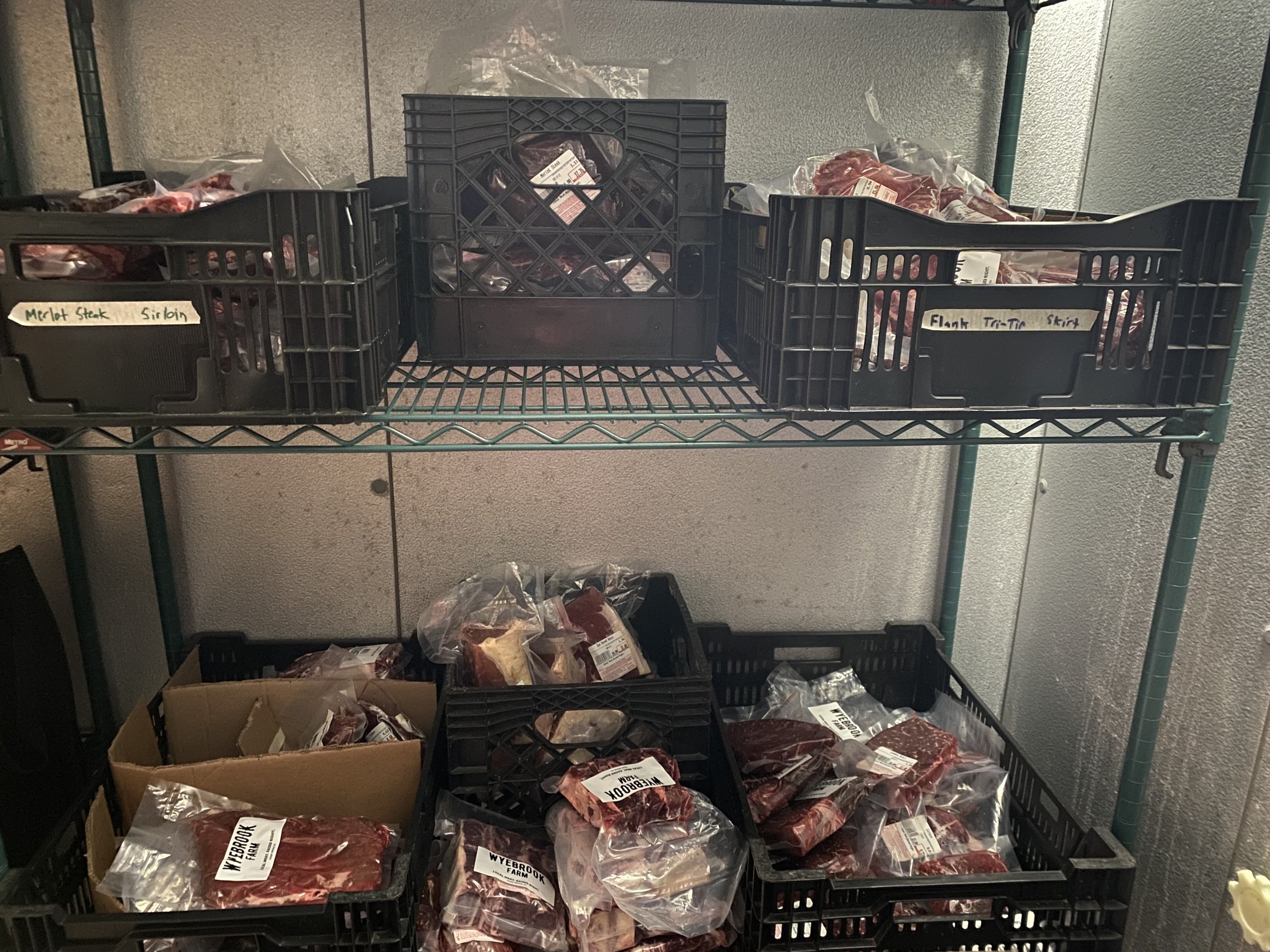Frozen Meat? Yes, You Should Be Eating It!
Push past the freezer burn fear.
We’ve all been there. It’s seven o’clock on a Wednesday and you haven’t grocery shopped in a while. You look in the freezer for something to make for dinner, and in between the ice cream and half-eaten loaves of bread is a package of ground beef. You consider thawing the beef and having it with spaghetti, but it seems questionable so you decide to get sushi…again.
Wait. Was that frozen ground beef okay to eat? Would it have tasted the same as refrigerated ground beef bought the same week? That depends.
Frozen meat gets dragged because of freezer burned pork chops and mystery packages of indeterminate age. But that’s just one side of the coin. Frozen meat also means beautiful steaks, chops, and roasts from local farmers that are just as delicious and nutritious as their fresh counterparts. For farmers raising better meat and their happy customers, frozen meat is a staple and a way to stock up on great meat. At Meaty, we think that frozen meat needs some reputation rehabilitation and we are happy to assist.
How do you freeze meat? What determines frozen meat quality?
The quality of frozen meat is largely influenced by how its frozen and thawed. The combination of freezing and thawing processes is what impacts the taste and texture of the cooked meat.
Meat freezes through a process of ice crystal formation within the muscle and fat. The faster the ice crystals form the smaller they will be. Smaller ice crystals are better than larger ice crystals because they are less likely to cause cell damage. Cell damage in meat is responsible for less juicy cooked meat and a mushy texture. The speed of crystal formation is determined by the method of freezing.
Meat that we purchase fresh and stick in our home freezers is going to freeze and thaw differently from meat that is frozen immediately after processing. At home, our freezers do not get cold enough to rapidly freeze meat, which means that fresh meat we stick in the freezer freezes slowly and develops larger ice crystals. In contrast, meat processors have high-performance freezers that are kept at incredibly low temperatures to quickly freeze the meat and ensure small ice crystals. This rapid freeze retains the original texture and flavor of the meat.
One of the biggest fears around frozen meat is freezer burn. Technically speaking, freezer burn is the discoloration of frozen meat caused by dehydration and exposure to oxygen. In practice, freezer burn makes frozen meat turn gray or white and, once the meat is cooked, it’s flavorless and tough. Though it’s not technically unsafe to eat meat that has freezer burn, it can be unpleasant, especially if you were hoping for a great, full-flavored steak or roast.
Freezer burn is less about ice crystal formation and more about how the meat is packaged. At home, when the meat is wrapped in plastic wrap or placed into a ziplock bag, there is more potential for air circulation and oxygen exposure that leads to freezer burn. At the processor, the meat is vacuum sealed before being frozen. Vacuum sealing removes all air and oxygen from the meat, which keeps it from getting freezer burn and means you get to enjoy your meat as it should taste.
What does frozen meat have to do with better meat?
Freezer burn fears are real. But, as explained above, it’s much less likely to happen if the meat in your freezer is vacuum sealed and frozen rapidly by the processor, which is great news for those of us looking to buy better meat.
As explained in this blog post, better meat usually comes from small, local farmers. These farmers generally do not have processing capabilities on their farms nor the time or space to sell all of their meat fresh. What they do have is large, high quality freezers and relationships with processors who cut the meat and rapidly freeze it for them.
This means that when you buy directly from small farmers, you’re probably going to be buying high-quality frozen meat. And as long as the package remains sealed and the meat is properly thawed, it will be just as delicious as fresh meat, with the added benefit of knowing that you are supporting your local food economy.
But, how long does frozen meat last? Frozen Meat Best Practices
Once you’ve purchased your frozen meat, there are a few tried-and-true strategies for making sure that it’s as delicious as possible:
Eat the meat within a year. Once meat is frozen, as long as it stays frozen at a temperature around 0°F it’s technically safe to keep forever. That said, taste does decline over time so we recommend eating the meat within a year.
Label meat packages with the date and their contents. A good way to make sure meat doesn’t get lost in the back of your freezer for years is to label everything with its contents and the date you put it in the freezer, and to make sure to keep the older packages towards the front.
Thaw the meat correctly. Meat should be thawed overnight in the refrigerator or in a bowl of water in the sink. Thawing in the refrigerator is the safest method because it keeps the meat below the temperature threshold where bacteria begins to grow (40°F). However, with a large cut of meat this approach requires some planning ahead. The other best method is to place a large bowl in the sink, put the meat into the bowl, and fill the bowl with cold water to cover the meat. Change the water every 30 minutes until the meat has thawed.




